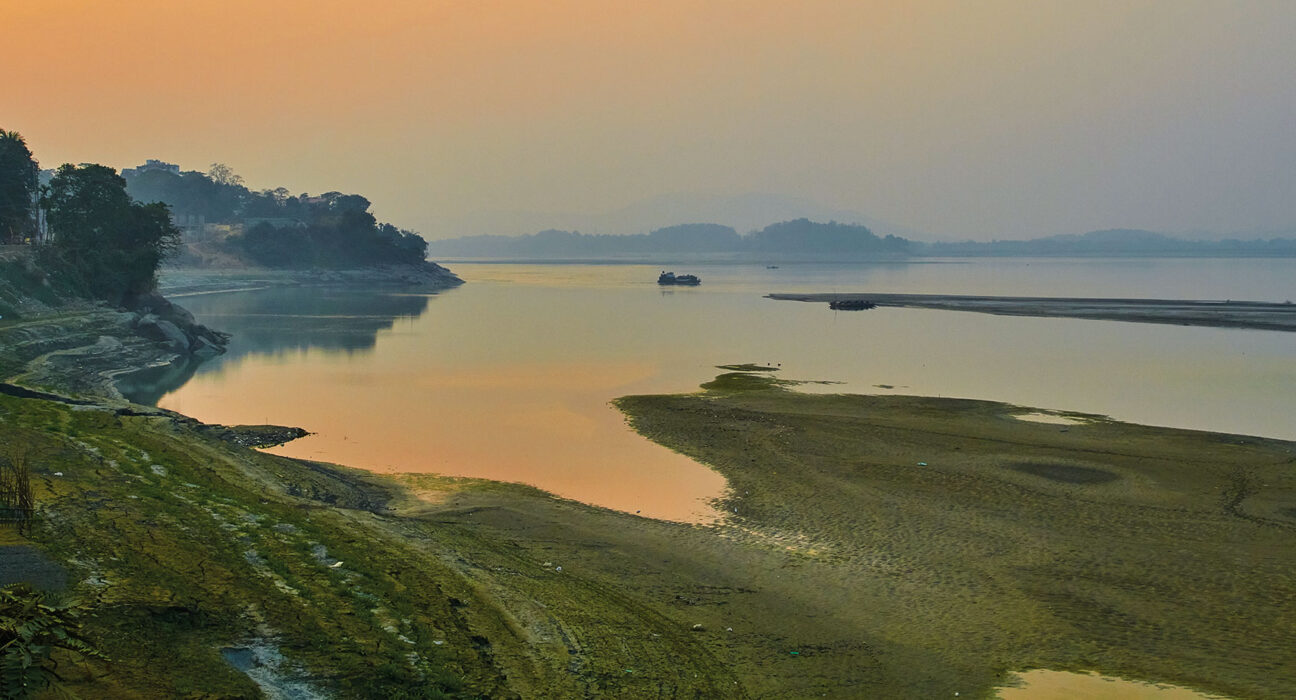Time to realise the potential of Brahmaputra river
In case of human beings, it is often said that “with great power comes great responsibility”, and in similar way for rivers, it can be said that with large volume of water comes huge sediments. The line generally holds true for many of the rivers in the world and the Brahmaputra River is one of them. Along with large amount of water that it carries, it also is one of the most sediment laden rivers in the world. However, one cannot deny the benefits that it brings with itself and this is the reason why despite such a massive sedimentation problem, the river is seen as a huge opportunity for economic and social welfare.
The Brahmaputra, which means the son of Brahma, also known as Yarlung Zangbo in China and Jamuna in Bangladesh, originates from the great Chemayungdung glacier in the Kailas range of the Himalayas, a little south of the Lake Konggyu Tsho at an elevation of about 5,150 m. It travels 1,800 miles (2,900 kilometers) from its Himalayan source to its confluence along with the Ganges (Ganga) River, where the two rivers’ combined waters get poured into Bay of Bengal. This majestic river flows for 720 kilometers in the Assam Valley. Many tributaries from both the north and south pay their respects to the master river here. Subansiri, Kameng, Belsiri, Dhansiri (north), Nyera Ama, Manas — Mora—Manas, Champaman, Gangadhar, Raidah, Dharla, and Tista are the primary streams joining with the Brahmaputra from the north. Prior to the devastating floods of 1787, the Tista was a tributary of the Ganga, but it diverged eastwards to join the Brahmaputra. The Dibru, Burhi Dihing, Noa Dihing, Dikhu, Dhansiri (south), and Kalang rivers all flow into the main river from the south.
The amount of water that the Brahmaputra contains can be put to good use such as that for development of the region and the people who live along its banks. The Brahmaputra River basin is home to a diverse and distinct ecosystem. The entire northeastern region is a known biodiversity hotspot at a worldwide scale. The entire forest cover of the Brahmaputra basin in Indian territory is 1,14,894 sq km or 54% of the total basin area. The Brahmaputra and its tributaries have an abundance of aquatic species.
Despite this, the river’s true potential in terms of hydropower generation and inland waterway transit is yet to be achieved. The Brahmaputra Basin is underdeveloped in comparison to many other river basins. The basin’s overall hydropower potential is estimated to reach 40,550 MW (Megawatt). On the main stem of the Tsangpo River near Zangmu, Tibet (China), a 510 MW run-of-the-river hydropower project has begun.
Several dam projects such as the Upper Subansiri (2,500 MW), Upper Siang (11,000 MW), Middle Siang (750 MW), Lower Siang (1,700 MW), Kameng (600 MW) and Ranganadi (450 MW) were reported to be at various stages of planning and development. By 2030, the total live storage capacity might be over 32,000 MCM, with a capacity built of around 29,000 MW. Subsequently, Central Electricity Authority projections, in 2001, had identified 168 hydropower projects for a total capacity of 63,328 MW in the Northeast.
On the main stem of the Tsangpo River near Zangmu, Tibet (China), a 510 MW run-of-the-river hydropower project has begun.
The IWAI is working to provide necessary navigational aids which will allow seamless travel at all hours of the day and night. It has put uploading and unloading terminals at crucial sites like Dhubri and Pandu, as well as temporary facilities in Jogighopa, Silghat, Neamati, and Dibrugarh. Pandu (Guwahati) is being built as a multimodal transportation hub that will serve the entire Northeast region. A permanent port in Dhubri, built at a cost of around Rs. 46 crores, is now fully functional. It is suggested that the existing Inland Water Transport (IWT) terminal in Jogighopa be expanded to a bulk cargo handling facility for items such as Meghalaya coal, with rail connectivity up to the terminal.
Coal from Meghalaya, fly ash from Farakka to various destinations in the Northeast, limestone for cement plants, petroleum products from Numaligarh refinery, bitumen from Haldia, food grains from Kolkata, fertilisers, building material, and bamboo are all potential freight movements along NW2. Project cargo and machineries could be another big cargo, arising from the ambitious power projects which are projected on several tributaries of the Brahmaputra River, particularly in Arunachal Pradesh.
The project intends to strengthen passenger ferry infrastructure and service, as well as inland water transport institutional capability and framework in Assam. This project has a lot of potentials to help India realize the true potential of inland water transport. The expected date of completion is by the end of 2024.
Apart from this, the ‘Security And Growth for All in the Region’ (SAGAR) initiative was bolstered by Prime Minister of Narendra Modi in 2020 to deepen economic and security cooperation with its maritime neighbours and assist them in building their maritime security capabilities. For this, India would cooperate in exchanging information, coastal surveillance, building infrastructure, and strengthening their capabilities.
With such vision to leverage the blue economy by using inland transportation and various other projects, as discussed above, concerning the Brahmaputra River coming up, one can be assured that India has truly begun its adventure into an area that was under-utilized for so many years.

Atul Kumar
About Author
Department of Management Studies, IIT Roorkee


